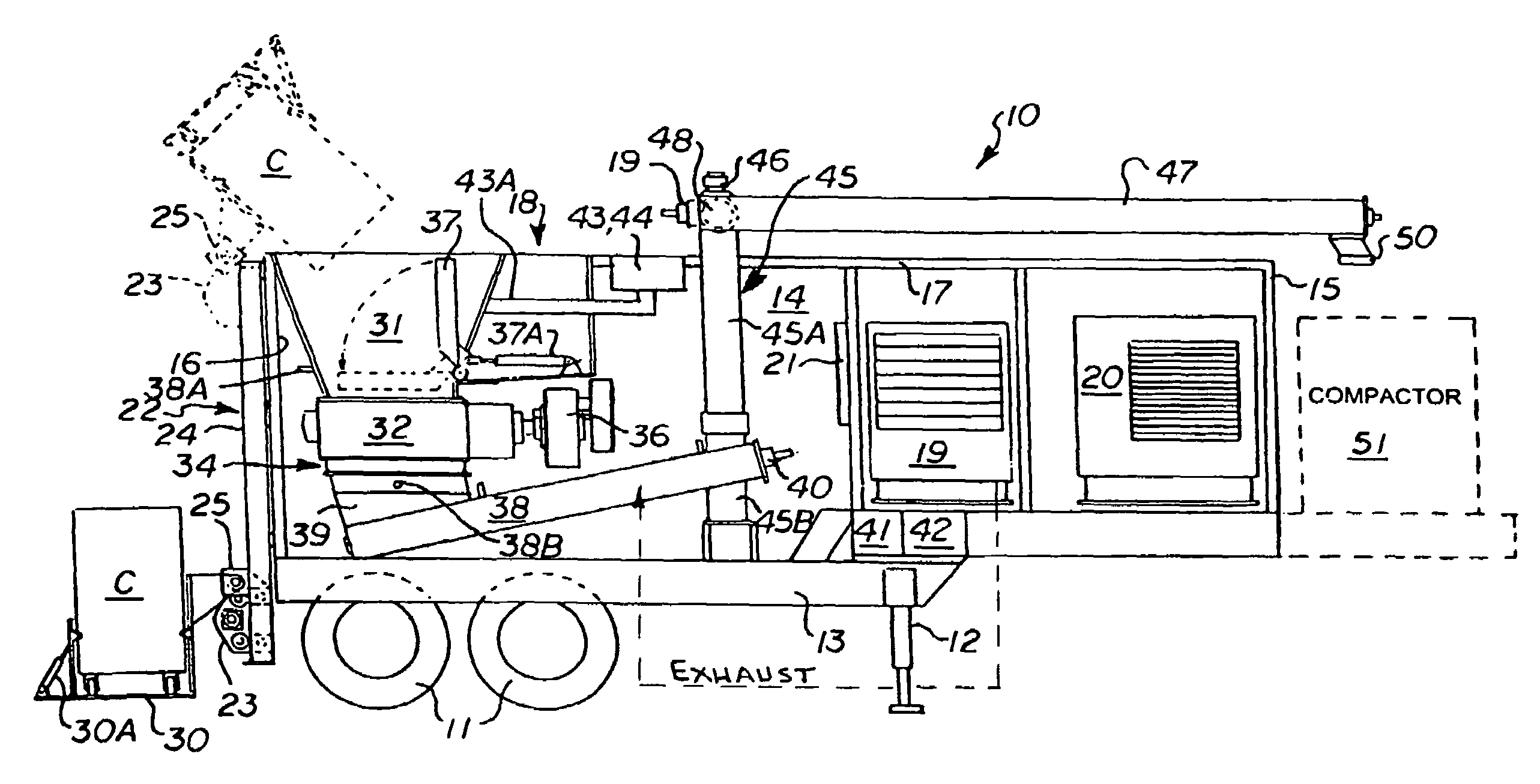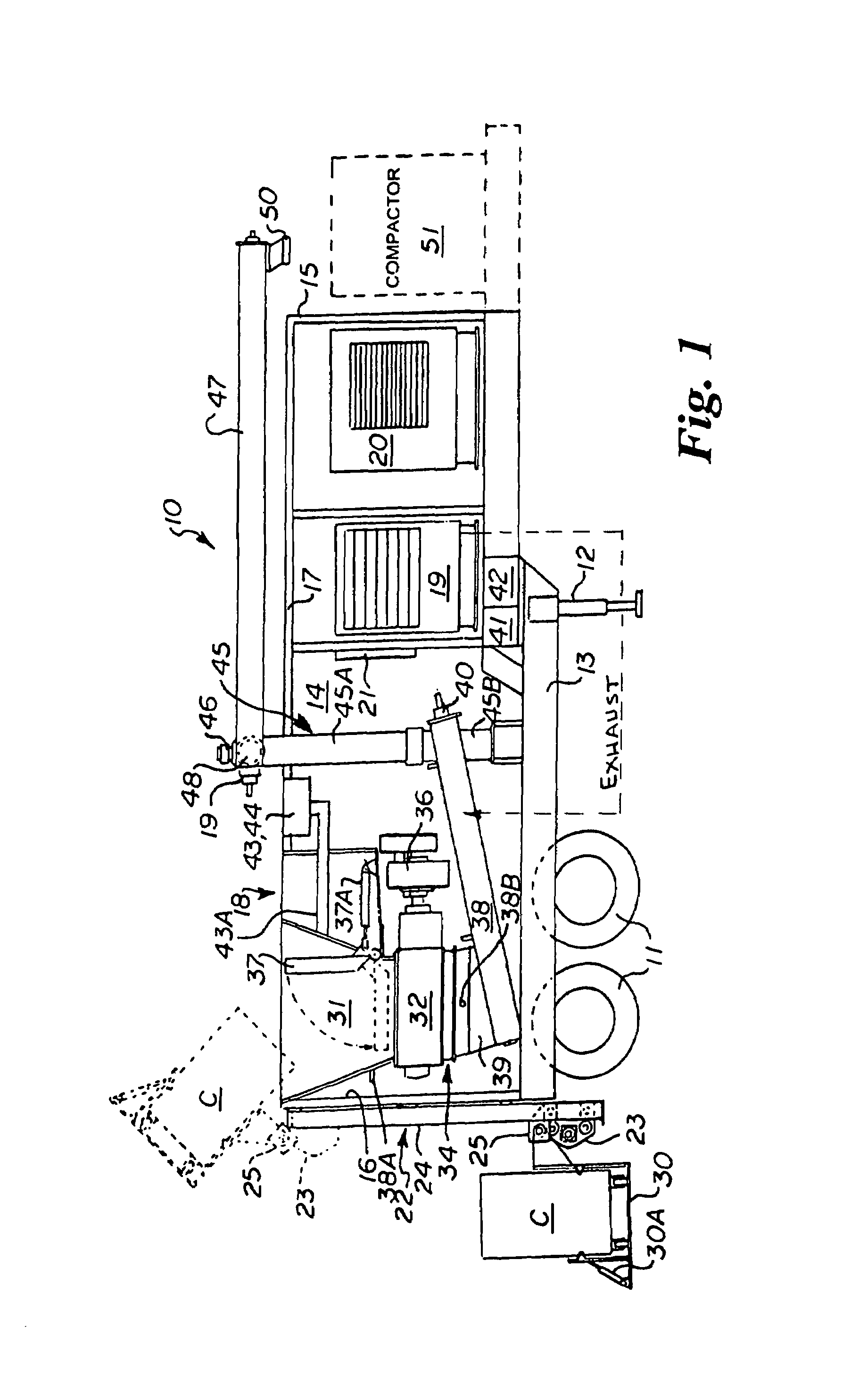Mobile apparatus and process for treating infectious waste
- Summary
- Abstract
- Description
- Claims
- Application Information
AI Technical Summary
Benefits of technology
Problems solved by technology
Method used
Image
Examples
Embodiment Construction
[0048]Referring to the drawings by numerals of reference, there is shown in FIG. 1, a mobile waste processing trailer 10 which contains a system of apparatus 18 for processing waste materials. The waste processing apparatus 18 is contained substantially within the enclosed wheeled trailer 10 which may be coupled to a truck tractor and transported to various job sites and health care related facilities such as hospitals, clinics, doctor's offices, etc., for processing waste materials, such as infectious medical waste material on-site. The trailer 10 has an elongated frame supported at the rear end by rear wheels 11 and at a forward end by extensible legs or jacks 12.
[0049]The trailer 10 has a floor or bottom wall 13, opposed side walls 14, front and rear walls 15 and 16, respectively, and a top wall 17 which surround and enclosure the waste processing apparatus 18 mounted inside with the exception of a discharge screw conveyor 47 which is disposed exterior of the trailer enclosure. T...
PUM
| Property | Measurement | Unit |
|---|---|---|
| Fraction | aaaaa | aaaaa |
| Pressure | aaaaa | aaaaa |
| Concentration | aaaaa | aaaaa |
Abstract
Description
Claims
Application Information
 Login to View More
Login to View More - R&D
- Intellectual Property
- Life Sciences
- Materials
- Tech Scout
- Unparalleled Data Quality
- Higher Quality Content
- 60% Fewer Hallucinations
Browse by: Latest US Patents, China's latest patents, Technical Efficacy Thesaurus, Application Domain, Technology Topic, Popular Technical Reports.
© 2025 PatSnap. All rights reserved.Legal|Privacy policy|Modern Slavery Act Transparency Statement|Sitemap|About US| Contact US: help@patsnap.com



